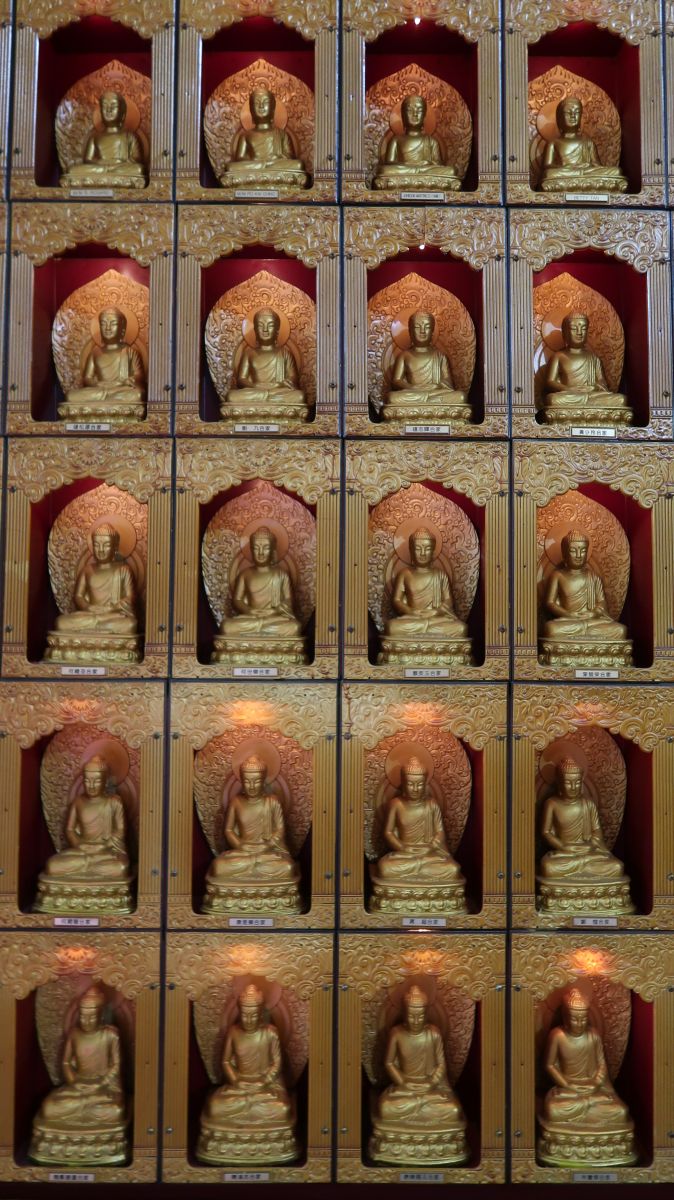Special Topics
The Diverse Forms of Lamp offerings

Prior to the prevalent use of electricity, lamp offerings were all in the forms of candles and oil lamps. Once electric lamps were invented, they soon replaced the traditional candle or oil-based lamps, since they are much less dangerous than the ones with flames and can be available in various shapes. Nowadays, electric lamp offerings are commonly arranged in the following forms:
1. Wall mounted style
Lamp offerings are arranged in an overall rectangular pattern, usually embedded in or hung on the walls of temples, similar to Buddhist niches.
2. Mini pagoda style
Lamp offerings are placed on a pagoda-shaped rack of a size suitable for placing on an offering table.
3. Pillar style
Integrated into the architectural structure of a temple, numerous lamps are embedded within various pillars of lamp offerings.
4. Pagoda style
With this style, the lamp rack is designed to imitate the Buddhist pagoda. But in comparison to mini pagoda-shaped racks, they are more common and larger in size, with some extending from the floor to the ceiling.
Among these towers, pillars, and niches of diverse designs, numerous small holes are made on these structures for placing lamps. It is a common practice for the lamp offerings in Buddhist temples to have a scaling-down image of Sakyamuni Buddha embedded at the back panel of each hole. A small light bulb appears on the roof of each individual Buddhist niche, forming many miniature Buddhist niches.
Related articles:
The Origin and Transformation of Lamp Offerings
The Diverse Forms of Lamp offerings
The Design of Lamp Offerings at Dharma Drum Mountain
Similarities and Differences in Light Offering in Different Countries
Perspectives on Lamp Lighting Across Different Cultures
Commonly Asked Questions on Light Offering
Resource: Issue 281 of Humanity Magazine, Dharma Drum Publishing Corporation
Translation: Sinag-ling Li (李祥苓)
Editing: Keith Brown, YKL
